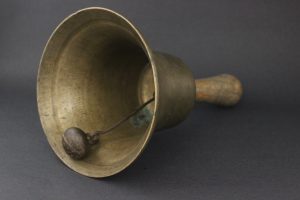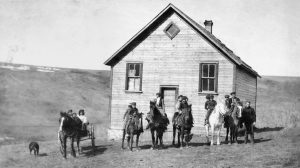Scotia 1925-1942, Getting There
Enjoy the video, Scotia and Getting There, with a transcription.
Scotia School was built in 1925 on donated land in a coulee. This location gave each family equal access up and down the hills and it served as a vital meeting place. Contributions provided a swivel chair for the teacher and a piano, as well as funding for many community events. In 1942, the school was closed and moved to be used as a teacherage.
Getting to a school on the Alberta Prairie could be grueling. The Blackfoot method of teaching in community was well suited to the environment, as lessons could be reflexive to the needs and conditions of the day. In settler communities, those from large families had older siblings to help them get to school. Many of the eldest children missed their first year, as it was too far to go alone safely.
Any roads that were available were of poor quality. Some older students were permitted to take the family car.
“It was quite a trip. If it was blizzarding too much, they wouldn’t let me go, they were afraid I’d freeze to death somewhere along the road. These cars were not the same then, so I missed a lot of school.”
Frank Schwengler
To walk one mile across a field, a child would leave at 7:00 am and arrive to school at 9:00 am. Sometimes a neighbour would give them a ride, or the community would take turns picking up the children up in a car.
Riding on horse-back posed various dangers and resulted in many near misses. Memories abound of being bucked off and breaking bones.
“Our father made us a two wheeled cart that we would take in the summer, that would hold five or six kids. We would usually drop the reins and let the horse get home. But one day, we fell asleep and the horse wandered into the ditch and rolled the cart onto its side. Nobody was hurt and we managed to upright the cart, and only the cart shaft was damaged.”
Vera Schmaltz
When schools began to consolidate in Beiseker, school buses picked up the children from the surrounding areas. Buses made getting to school much easier and provided opportunities for students to connect in new ways. But of course, transporting students longer distances by road held its own dangers. Students today cite buses as a hotspot for bullying and despite advances in transportation safety, busing remains the most dangerous part of the school day.



